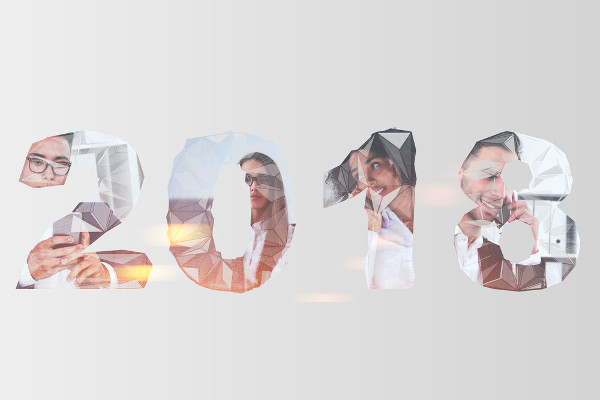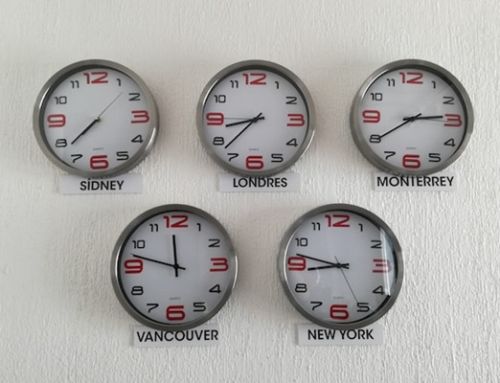New technologies are coming out so fast and so many are being so hyped that it can be hard to know where to look. Will what the tech journalists say be true? What happened to all those technologies that were going to change our world from last year? And when are we finally getting that flying car that they’ve been saying are ten years away since the 1900s?
With all of that going on, you could be forgiven for deciding to ignore it all and just stick to the ways you’re used to. Many companies do. And of course, being a bit conservative can’t hurt. At the same time, sticking your head in the sand won’t do you any good, as your competitors speed ahead, doing more with less money.
Also read: The Impact Of Machine Learning In HR
For that reason, take a look around and see what the newest technologies are. Then do your homework to know which are best for you!
Here are some of our best predictions for 2018.
Blockchain
Blockchain is one of the most revolutionary technologies of the past few years. Originally developed as the accounting method for the virtual currency Bitcoin, blockchains – which use what’s known as distributed ledger technology (DLT) – are appearing in a variety of commercial applications today. Currently, the technology is primarily used to verify transactions, within digital currencies though it is possible to digitize, code and insert practically any document into the blockchain but other industries have already begun to develop a variety of applications.
Blockchain technology can be used to manage employee payment, decentralize documentation, speed up data processing, aid legal documentation and a great deal more. For HR, the most exciting possibilities are probably the opportunity to make it possible for internationals to spread out their salary and compensation processes so that they are less expensive and far quicker to operate – all without losing privacy and even gaining transparency.
One company already operating a blockchain-based payroll system is Bitwage, a San Francisco-based organization that uses the technology to facilitate cross-border payments through use of Bitcoin. Bitwage allows employees or contractors around the world to be paid by organizations in their preferred currency, handling the conversion of Bitcoin to local funds. Employees can use 25 different currencies to receive wages, and Bitwage promises to pay out within 48 hours regardless of where workers are located.
Augmented and virtual reality
Yes, admittedly this one was massively overhyped. Truth be told, that happens with most technologies. At the same time, there is real potential here. Imagine how useful it would be if the moment people walk into your office, the computer system automatically pulls up data about them for you to peruse while you’re having a conversation.
Similarly, there are going to be huge benefits to not having to look at your computer every time you need some fact or figure about a person or a company.
VR also has some huge advantages. For example, imagine the advantage of having the first round of interviews happen online instead of having all the participants coming in. This will massively speed up the process of finding a replacement and will even make it easier to get people to apply from other cities or even countries.
Yeah, sure, Skype already serves that function, but it isn’t quite the same.
Another great function that these technologies could serve is that they will make it easier for people to learn new skills. They can both work online and gain hands on experience – something that until now has been an oxymoron.
Internet of Things
Being able to track when employees arrive and depart centrally and easily would be very useful. Similarly, it would be great if they could access processes like sick day and leave requests from their mobile devices.
The internet of things offers that and more, with devices connected and sharing information quickly and effectively, so that the information we need will arrive where we are. In this way, we can avoid missing out on anything.
Nor does it end there.
- Drones that pick up and deliver packages
- Giving employees access to their performance data so that they can know where they’re ahead of the curve and where they’re behind
- Increasing their effectiveness and thereby their engagement (as is already being done at Volkswagen and Shell).
- Tracking their mental and physical health so that you can avoid a burnout or a breakdown before it happens.
It’s all possible.
Big Data
Along with the IoT and everything else comes big data. Basically, we’re collecting huge amounts of data about how, when and where people work at their best and at their worst. The only thing that we need to do is figure out how we can analyze that data correctly.
Also read: HR’s Future is Big Data
From there, we’ll then be able to offer advice and strategies to help people cope with their workload, get the most out of their work day and even boost their life and work satisfaction. It’s all within reach if we can just get the right people to figure out how to tease the information from the data we’re gathering.
Artificial Intelligence
Of course, we could use AI to do that analysis. Do note, that algorithms aren’t AI. AI use algorithms, but they aren’t algorithms. Instead, it’s about getting computers to act intelligently and to be able to work autonomously. That means they’re so much more than just dumb algorithms working in the background. Instead, they make use of deep learning, hardware advances and code writing its own code.
In fact, AI is a little bit scary, as there are quite a few programs out there which are so complicated we no longer understand what they’re doing. They aren’t just learning to do the stuff at OkDissertations.com. MIT recently wrote an article about that dark secret. Facebook recently turned off several AIs chatbots because they had developed their own language and no longer served the purpose of engaging with us.
Yeah, that is a bit frightening. At the same time, imagine the technological possibilities! These programs can discover answers to questions we haven’t even been aware we needed to ask! And let’s be clear about it, HR could use a bit of that. There are a lot of questions we’re just too overworked to ask. Letting an AI take a crack at those might just create the solutions we’ve been too stressed to work out for ourselves.
This is obviously particularly true if we also include big data. Because then the opportunity exists for these bots to learn from our actual behavior.
Also read: Possible Applications of AI in HR
The future is here (Sort of)
The technologies I mentioned are here. They’re already around us and being used. Sure, some need a bit more time to mature. The thing is, if you don’t engage with them now, then chances are you’ll be behind when they actually become what people predict they become.
And in those situations you’ll be playing a desperate game of catchup as everybody makes a move to get the same players – both in terms of employees and companies – on board. Even worse, as you will be from the outside looking in, you still won’t know what the real opportunities are. Instead, you’ll be reading the same articles as everybody else.
A much better strategy is to start in now. You don’t have to go overboard. You don’t need to invest millions of dollars. All you need to do is make sure that when they want to showcase their new technologies, you’re on their list.
That means inviting them over and it also means simply making some initial inquiries. Then you’ll have a much better understanding of what’s going on and will hopefully be one or two years ahead of the curve. And that won’t just save you money – that can mean outmaneuvering the competition.
So stay interested, stay up to date, stay hungry.
Download the white paper and see how you can create an integrated, engaging employee experience using people analytics!
Image licensed from Depositphotos.com






Love this appreciation for great content
This post was exactly what I needed to read today Your words have provided me with much-needed clarity and reassurance
Your writing style is so relatable and authentic It’s a breath of fresh air in a world filled with superficiality and pretense
Thank you for always being open and honest with your readers It’s refreshing to see a blogger who is unafraid to be vulnerable and real
Your posts are always so well-researched and informative I appreciate how thorough and detailed your content is
This blog post has left us feeling grateful and inspired
The photographs and visuals used in this blog are always stunning They really add a beautiful touch to the posts
Your words have resonated with us and we can’t wait to read more of your amazing content. Thank you for sharing your expertise and passion with the world.
Your writing is so genuine and heartfelt It’s refreshing to read a blog that is not trying to sell something or promote an agenda
naturally like your web site however you need to take a look at the spelling on several of your posts. A number of them are rife with spelling problems and I find it very bothersome to tell the truth on the other hand I will surely come again again.
Your posts are always so relatable and relevant to my life It’s like you know exactly what I need to hear at the right time